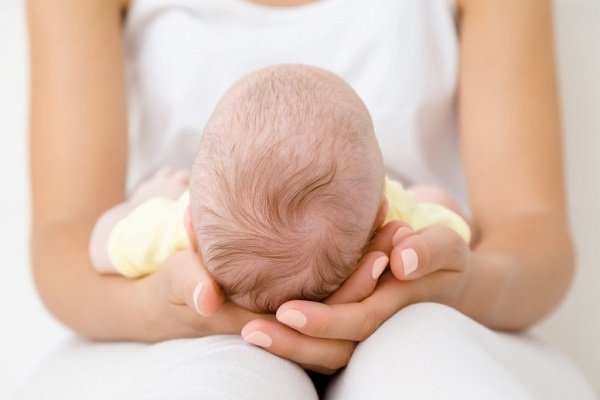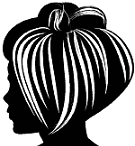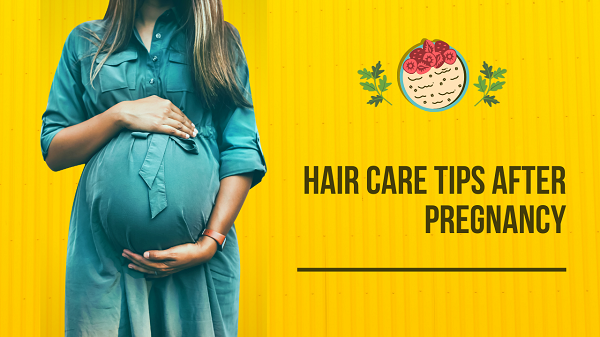In this article, we tell you everything you need to know about hair care tips after pregnancy. Everyone knows that the postpartum period is a period when the hormones are completely changed, and precisely because of this, telogen effluvium is produced, which causes us to lose a large part of our capillary density.
This is more evident at this time after pregnancy, as we normally feel our skin and hair better than usual during pregnancy, which makes this decline more noticeable.
Hair Loss after Pregnancy

The person may experience hair loss problems about 3 months after birth. Postpartum hair loss, medically known as telogen effluvium, occurs shortly after birth due to the body’s changing levels of progesterone and estrogen. Doctors may also refer to postpartum hair loss as excessive hair loss. After giving birth, the body’s hormone levels drop rapidly and return to pre-pregnancy levels. This decrease in hormones triggers the hair to return to its old growth cycle. Although it may differ from person to person, the hair should come out completely within 3–6 months.
What Are the Causes of Hair Loss in the Mother After Childbirth?
One of the biggest causes of hair loss in the mother after the pregnancy period is hormonal changes. During pregnancy, there is an increase in some hormones, especially estrogen and progesterone.
After birth, some of the hormones that increase start to decrease. During this period, the prolactin milk hormone rises. Changes in hormones in the body come together with problems such as anxiety and stress, and hair loss occurs.
If there is intense hair loss in the mother after birth, there may be other reasons behind it. For example, iron deficiency in the mother can cause this.
Anemia can also cause intense hair loss. Not getting enough minerals and vitamins can also trigger hair loss in the mother.
You should definitely act together with your doctor on these issues. You can see the necessary treatments according to the prescription he will give. Thus, you can eliminate the spillage problem.
On the other hand, hair loss seen in the mother can start right after birth. Or shedding may begin a few weeks after birth. So what can we do to eliminate spillage? Let’s get over this problem together.
Things to Consider After Birth

Many new mothers experience noticeable hair loss within a few months of having a baby. Apart from this, hair that has lost its vitality can also be observed commonly. Although it may cause concern, this is normal and can be resolved with hair care after delivery. Decreased estrogen levels after pregnancy and a decrease in keratin levels are some of these reasons.
Therefore, you need to know that this is not permanent and that you can solve it with the right care. You don’t need to do almost anything to fix it. Because maintenance is very easy. Most women can see their hair return to normal by the baby’s first birthday. Many women regain their normal fullness sooner. But for this, you need to do the applications correctly.
For this reason, it is also important what you should pay attention to for hair care after giving birth.
- Use volumizing shampoo and conditioner. These shampoos tend to contain ingredients like protein that coat the hair and make it look fuller.
- Do not choose shampoos labeled as care shampoo. Because it has heavy conditioners that weigh down the hair, making it limp.
- Use conditioner formulated for fine hair. These contain lighter formulas that will not weigh down the hair.
- Use the conditioner on the ends of your hair first. Applying conditioner to your scalp and all of your hair tends to weigh it down.
- Avoid conditioners labeled as intense conditioners. They are harmful because they are very heavy.
- You should also pay attention to sleep about how hair care should be after birth. Because during sleep, hair cells begin to increase rapidly. Even a small nap can help, although sleep is considered impossible because of the baby.
Tips for postpartum hair loss

You can reduce the effects of hair loss a little with some tricks to consider while waiting for the hair shed after birth to return to its normal growth cycle. These;
- You can try beautiful and modern short hair that will suit your face type.
- You can choose a hairstyle and color that is different from normal and makes your hair look fuller.
- A quality shampoo and conditioner containing biotin can support this process.
- You can use products that make your hair look fuller.
- Avoid applications that stretch, pull, and expose hair to excessive heat.
How should hair care be during the postpartum period?
For this, it is very important to know what condition your body is in. Because after birth, some changes occur in the body. Knowing this allows you to take precautions more accurately.
Therefore, it is recommended that you have blood and vitamin tests and have your thyroid levels checked. Thus, you can get the most accurate results and draw a roadmap. Accordingly, you can learn what you need to do by talking to a dietitian and dermatologist.
Apart from this, it is also recommended to pay attention to foods rich in Omega-3 in order to have strong and healthy hair. Thus, your hair can reach its former state in a shorter time. Paying attention to the hair care products you use is also important in how hair care should be after giving birth. Because if there are chemical products, they can damage your hair more during this period. Using the right care products is also essential during the process.
Creams and shampoos, especially rich in biotin, nourish your hair more. Therefore, it offers you better results.
If you frequently use curling irons, perms, and blow dryers, the heat will damage your hair. This, combined with the hormonal changes after pregnancy, causes worse situations. For this reason, it is recommended to protect your hair from heat and not perform such applications.
The structure of the combs you use while combing your hair is also important for hair care after birth. Especially wide-toothed combs are more helpful in the process. By paying attention to all these, you can achieve more beautiful hair.
You May Be Interested In
Men’s Hairstyles by Face Shape: Finding Your Perfect Look

